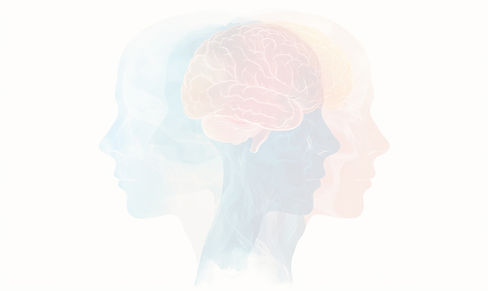
What is Craniosacral
Therapy?
Craniosacral Therapy (CST) is a gentle, hands-on form of bodywork that works with the body’s deep internal rhythms to support healing, balance and overall wellbeing. Rooted in osteopathy, CST uses subtle manipulations of the spine, sacrum and cranium to release restrictions in the nervous system, fascia and craniosacral system — helping the body return to a more balanced and self-regulating state.
The craniosacral system is a physiological system that extends from the skull and face down through the spine to the sacrum and coccyx. It includes the membranes that surround the brain and spinal cord, the cerebrospinal fluid (CSF) that flows within them and the bones and tissues that support this dynamic system. Because it directly influences the brain and spinal cord, restrictions in this system can have far-reaching effects throughout the body.
By gently addressing these areas, CST helps normalize the craniosacral environment and supports the nervous system’s natural ability to heal and function optimally.

A CST session typically involves lying fully clothed on a comfortable table while the therapist uses very light touch to assess and treat the body. The practitioner palpates the craniosacral rhythm, a subtle but measurable pulse that moves between the cranium and sacrum, evaluating qualities like rate, symmetry and amplitude.
By gently releasing restrictions in the connective tissues, dural membranes, cranial sutures and fascia, CST helps restore fluid motion and balance within the body. Fascia, which forms a continuous web throughout the body, often holds patterns of tension from past injury or stress. Releasing these restrictions supports physical and emotional unwinding, often with profound effects.
Craniosacral Therapy is quiet, deeply restorative and often described as a cross between osteopathic work, gentle chiropractic techniques and intuitive healing. It may appear subtle, but its impact runs deep — tuning into the body’s core rhythm and restoring harmony from the inside out.
CST is used to address a wide range of physical, neurological, and emotional conditions. Some commonly treated concerns include:
-
Chronic pain (including neck, back, and joint pain)
-
Headaches and migraines
-
Temporomandibular Joint (TMJ) dysfunction
-
Post-surgical recovery
-
Nervous system disorders
-
Digestive issues (e.g., IBS, Crohn’s disease)
-
Trauma recovery (physical or emotional)
-
Sleep disturbances and stress-related tension
-
Developmental and neurological conditions (e.g., cerebral palsy, autism, learning challenges)
-
Tinnitus
Rather than focusing solely on symptoms, the CST practitioner works to identify and release the root cause or primary dysfunction that may be creating layers of adaptation within the body.
Many clients describe feeling deeply relaxed, grounded and clearer after sessions, with effects that often unfold gradually as the body integrates the work.
